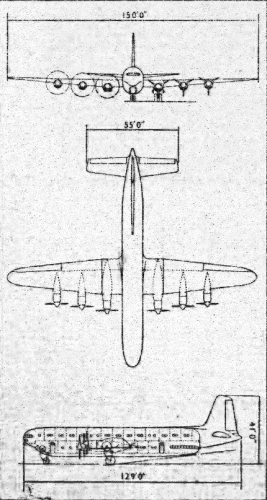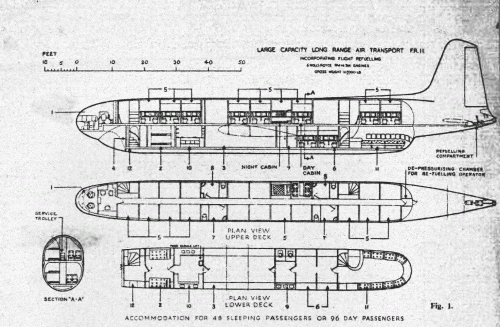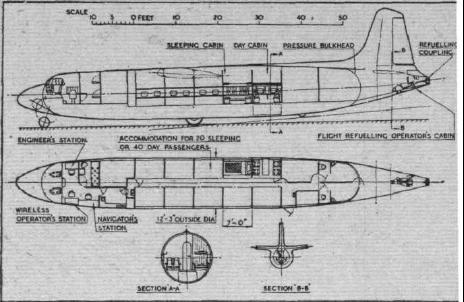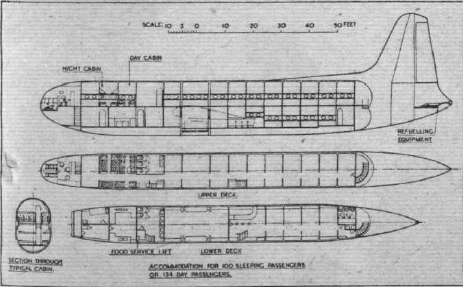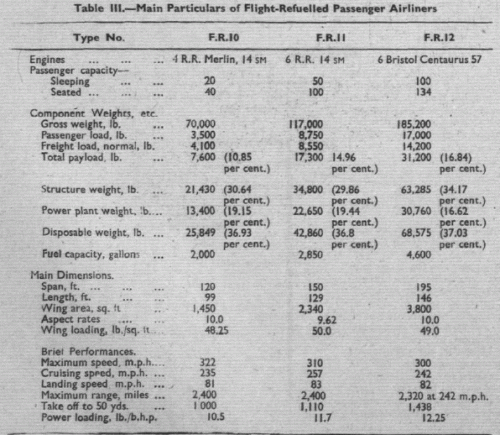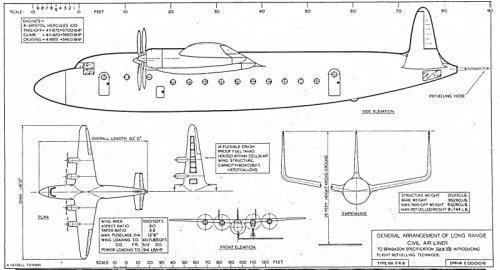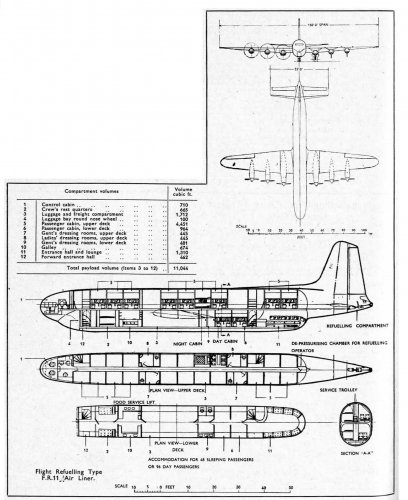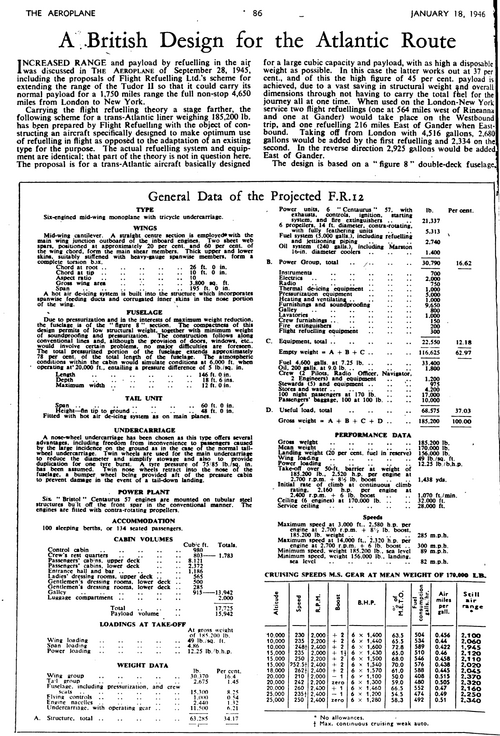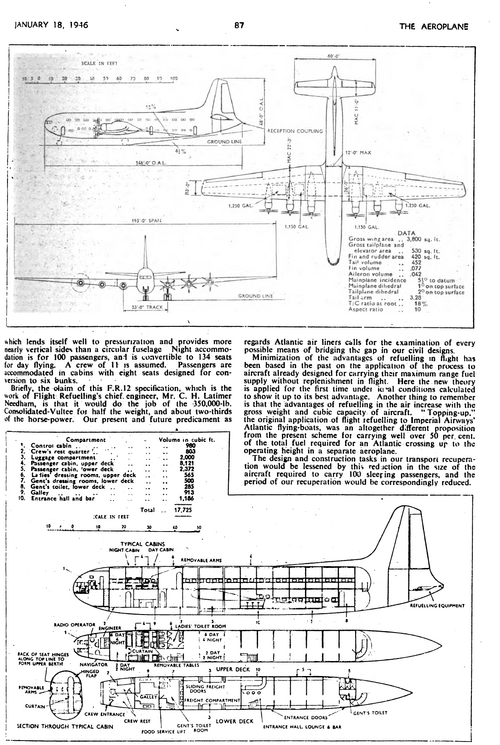The Chief Engineer of Flight Refuelling Ltd, C.H. Latimer-Needham, designed these airliner as an investigation into carrying similar passenger loads to the Brabazon requirements but with in-flight refuelling. The proposed flightplan was London-New York with two refuellings from London and one on the return leg.
FR.10, to accomodate 20 sleeping or 40 day passengers and 4,100lbs of freight, four RR Merlin 14.SM, 120 ft span, 99 ft fuselage length, range 2,400 miles ,empty weight 44,705lbs, all-up weight 70,000lbs, passengers and freight as % of all-up weight 10.85%
FR.11, to accomodate 50 sleeping or 100 day passengers and 8,550lbs of freight, six RR Merlin 14.SM, 150 ft span, 129 ft fuselage length, range 2,400 miles, empty weight 73,650lbs, all-up weight 11,850lbs, passengers and freight as % of all-up weight 14.93%
FR.12, to accomodate 100 sleeping or 134 day passengers and 14,000lbs of freight, six Bristol Centaurus, 195 ft span, 146 ft fuselage length, range 2,320 miles, empty weight 116,620lbs, all-up weight 185,200lbs, passengers and freight as % of all-up weight 17.12%
The Bristol 167 Brabazon was estimated as 42 sleeping or 100 day passengers, 4,000lbs freight, eight Bristol Centaurus, 230 ft span, 177 ft fuselage length, range 5,500 miles, empty weight 160,000lbs, all-up weight 275,890lbs and passengers and freight as % of all-up weight was 8.63%. Clearly in Flight Refuelling Limited's minds this proved that in-flight refuelling was more economical to run and required a smaller aircraft. Of course these were proposals only but it did get the Air Ministry to form a committee and begin funding trials.
They looked at the effect of flight refuelling on BOAC's Stratocruiser fleet; during the winter months 36 passengers could be carried London-New York via Gander or 63 with another stop at Shannon (T-O wight 135,000lbs). By using a take-off weight of 127,150lbs and a flight refuelling 240 miles west of Rinenma, Ireland it was thought 114 passengers could be carried. Return only 33 passengers could be carried non-stop, with a refuelling over Gander that would increase to 114. This kind of advantage was also shown on the London-Bermuda route. It was estimated that refuelling costs would be no more than £250 per operation within 100 miles of base or £325 200 miles from base. The total cost per return London-New York flight would be £750, easily covered by the increase in fare-paying passengers. This led to the BSAA trials of 1947 to Bermuda with four converted Lancasters.
Source: 'History of Air-to-Air Refuelling' by Richard M. Tanner

